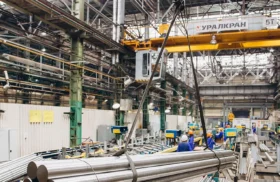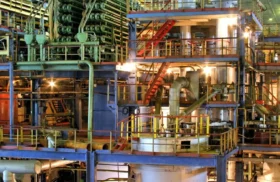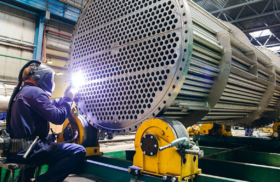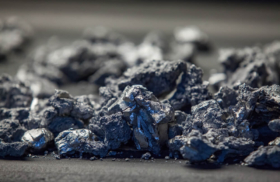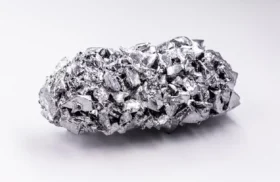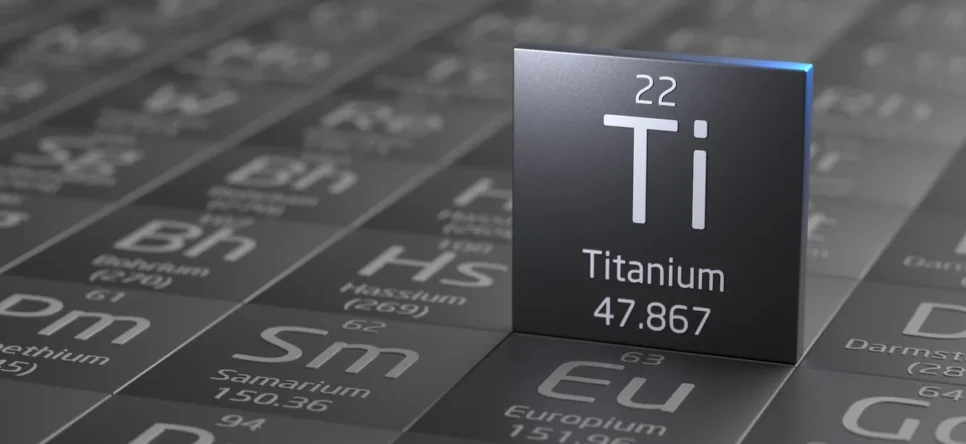
Hold a bar of titanium in your hand and you’ll notice its paradox right away: light enough to feel almost hollow, yet tough enough to stop a .45-calibre bullet in a lab test. Chemically it belongs to Group 4, nestled between the lightweights and the heavy hitters on the transition-metal block. At 4.506 g cm⁻³ it slides neatly between aluminium and stainless steel in density, but its specific strength—about 288 kN·m kg⁻¹—leaves both scrambling for second place.
Even at 400 °C the metal clings to roughly 90 percent of its room-temperature tensile strength, a feat few alloys can match. A whisper-thin, self-healing TiO₂ skin keeps seawater, acids and even bleach at bay, while a low elastic modulus, non-magnetic nature and textbook biocompatibility widen its résumé. Little wonder aerospace engineers, offshore rig designers, orthopaedic surgeons and smartphone stylists all compete for the same constrained pool of sponge—barely 330 to 350 kilotonnes a year, equivalent to less than 200 kilotonnes of finished metal. Scarcity is part of the allure.
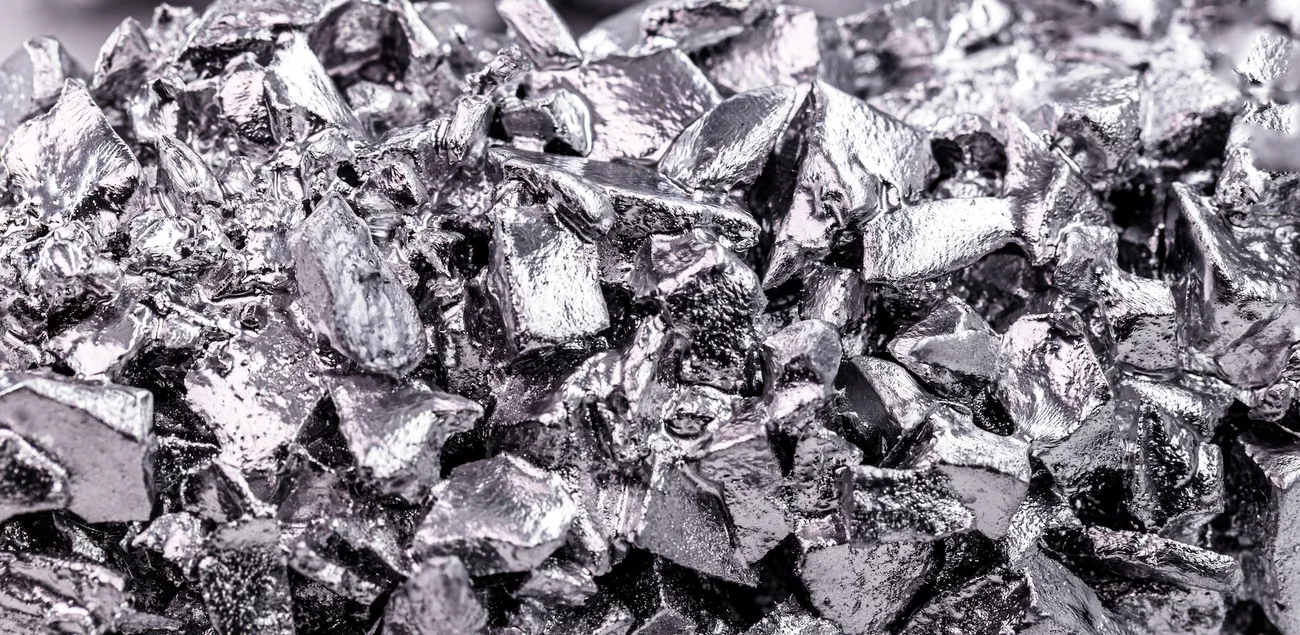
Shutterstock
History of Discovery and Use
Titanium’s road from curiosity to cornerstone took centuries. In 1791 the Cornish vicar-chemist William Gregor noticed an unusual oxide in black sand, but it was Martin Klaproth, four years later, who baptised the element after the Greek Titans. Real metal, however, had to wait for World War II, when Wilhelm Kroll showed that magnesium could strip chlorine from TiCl₄ and leave a spongy mass of near-pure titanium. The Cold-War jet race quickly turned that lab trick into an industrial necessity: the SR-71’s J58 engines and the MiG-25’s welded skins would have cooked ordinary alloys to a cinder. From 1980 onward Ti-6Al-4V flowed into Boeing 777s and Airbus A330s, then migrated into hip stems, dental screws and laser-sintered lattice parts. By the mid-2020s, governments were scrambling to “reshore” critical-mineral supply and to certify recycled, zero-waste powders for additive manufacturing.
Global Titanium Production and Supply Dynamics
Sponge output slipped to roughly 340 kt in 2024, a three-percent dip blamed on snarled Russian exports and cautious Japanese destocking. Early 2025 guidance hints at a rebound to around 355 kt as new Chinese chloride-slag lines pick up slack, though demand looks set to outrun supply. Country shares last year shook out near 60 percent China, 16 percent Japan, 13 percent Russia, four percent Kazakhstan and a slender two percent United States. Analysts at both CRU and Fastmarkets see a 15 to 20 kt hole opening in 2025 as Airbus and Boeing boost narrow-body build rates and defence programmes ramp up. Factor in sanctions on VSMPO-AVISMA, pricey magnesium, steep Asian power tariffs and post-COVID scrap scarcity, and visible inventories have shrunk to less than 1.8 months—half their pre-pandemic cushion.
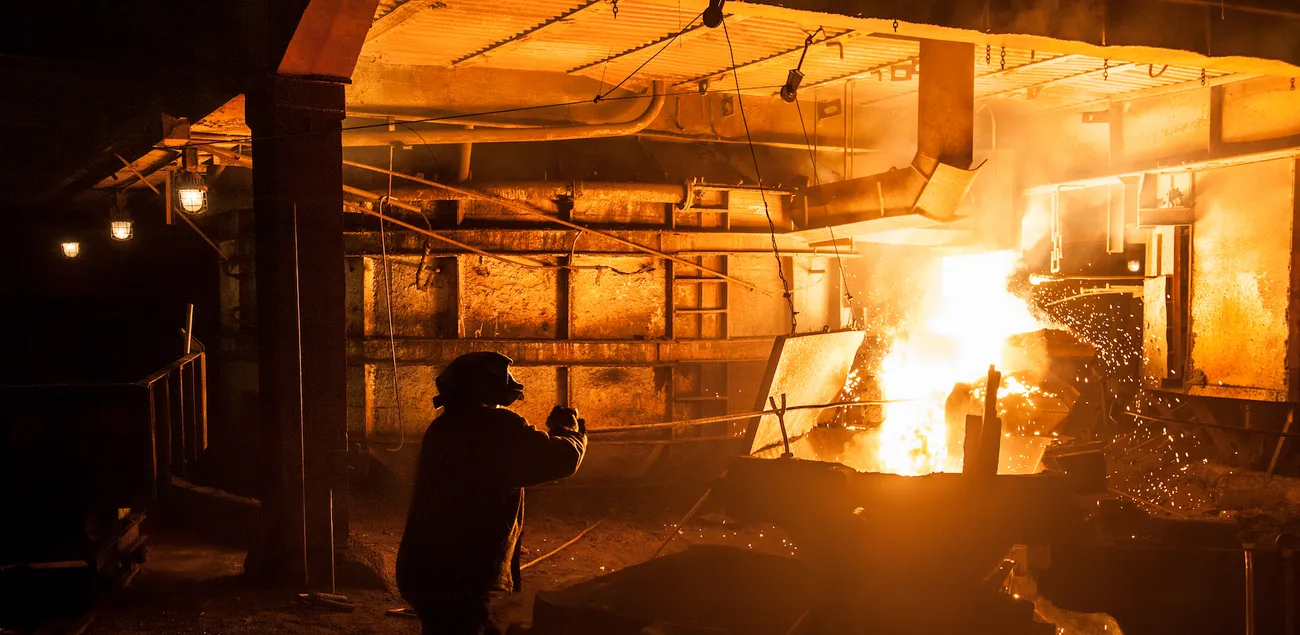
Shutterstock
Leading Producer Companies
Major Producers
- VSMPO-AVISMA (Russia) – about 43 kt sponge plus alloy in 2024; Upper Salda melt expansion targets 50 kt by 2026.
- BaoTi Group (China) – roughly 30 kt sponge and 60 kt alloys in 2024; a 10 kt Gansu line went live in Q2 2025.
- Toho Titanium (Japan) – near 26 kt sponge in 2024; debottlenecking adds three kt per year by Q1 2026.
- TIMET (USA) – around 15 kt ingot in 2024; a US$500 million Ravenswood melt-shop comes on-stream Q1 2025, doubling domestic capacity.
- ATI Inc. (USA) – circa 11 kt melt in 2024; a new isothermal forge lifts billet output mid-2026.
- Western Superconducting Technologies (China) – 12 kt bar in 2024; Phase III adds five kt of bar and powder in 2025.
- UKTMP (Kazakhstan) – 19 kt sponge in 2024; a feasibility study for a five-kt aerospace-grade expansion is due late 2025.
- Pangang Group (China) – about eight kt sponge in 2024; eyes 20 kt by 2027 via the chloride-slag route.
Mid-sized Players on the Move
- IperionX (USA) – five-kt circular-titanium powder module in Virginia, start-up second half 2025 on onsite solar.
- Neometals (Australia) – Barrambie Ti-V-Fe pilot in Australia; 500 kt concentrate planned for 2026 with a zero-residue flowsheet.
- TNG Ltd (Australia) – Mount Peake Ti-V-Fe project to refresh its DFS in 2025, adding renewable power.
- Generation Mining (Canada) – advancing the Marathon Ti-Cu-PGE co-product in Ontario toward construction.
- Tivan (Australia) – testing HCl leach and thorium sequestration at the Speewah titanium-hydro deposit in the Northern Territory.
- Kenmare Resources (Mozambique) – Moma monazite circuit could supply future titanium-metal feed.
- Hangzhou King Titanium (China) – scaling its Chinese atomiser from one to three kt of aerospace powder by 2026, powered by 100 percent renewables.
Industrial Applications Driving Titanium Demand
Aerospace and defence between them swallow close to 45 percent of the metal. Airbus and Boeing hope to ship more than 1 400 aircraft in 2025; a single A321neo uses six to seven tonnes of titanium and a Dreamliner tips the scales at roughly 77 t. Lockheed Martin’s 170-plane F-35 run plus the AUKUS submarine programme add a thick layer of plate and forging demand.
Chemical-plant heat-exchangers, LNG trains and refinery hydrotreaters capture about 15 percent, banking on titanium’s immunity to chlorides. Offshore energy and desalination claim another eight percent with bolts, geothermal pumps and condensers for small modular reactors.
Medical implants, propelled by ageing demographics, now exceed six percent and rising, while powder-hungry additive-manufacturing parts grow 18 percent year-on-year from a three-percent base. Even consumer tech has joined the queue: Apple’s titanium-cased smartphone alone soaked up around five kt of sheet in 2024.
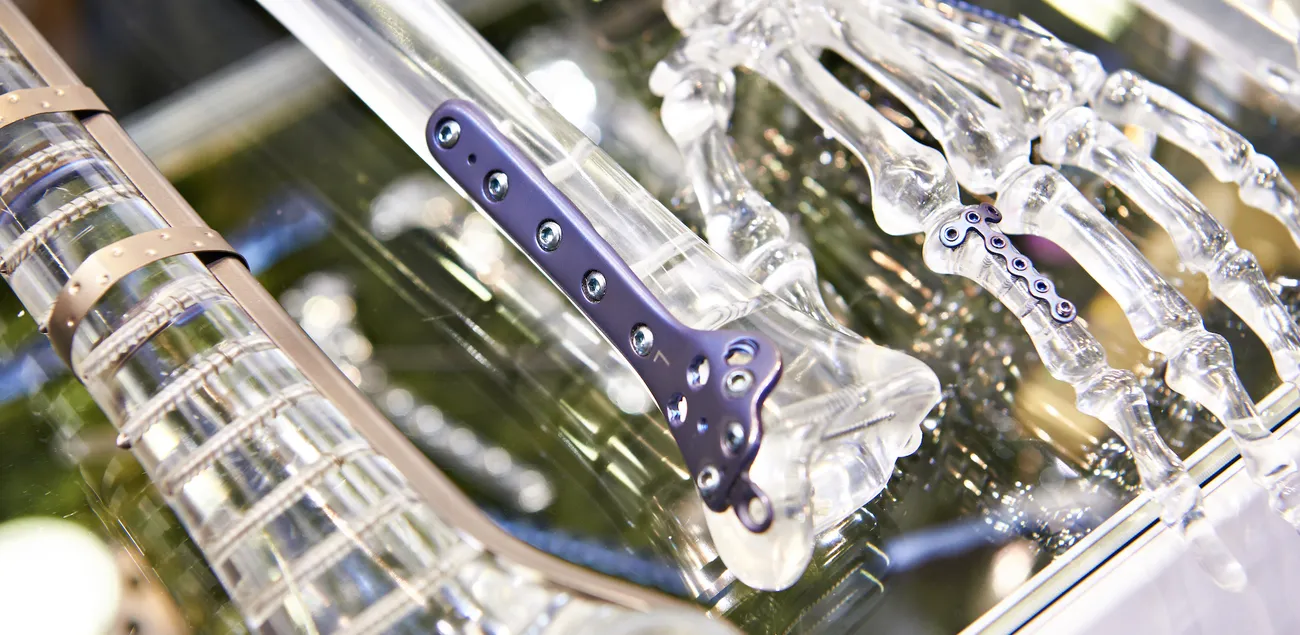
Shutterstock
Titanium Market Analysis and Price Trends
Chinese Grade-1 sponge changed hands at ¥ 50 500 per tonne—about US$ 7.0 kg—on 17 July 2025, a level not seen in thirteen years. Consensus forecasts pin full-year averages between US$ 6.50 and 7.70 kg, with swings from the high fives to the low eights depending on sentiment. CRU’s May balance sheet shows 355 kt of supply against 373 kt of demand, an 18 kt shortfall that squeezes visible stockpiles to less than two months.
What’s driving the spike? Faster narrow-body build schedules, sovereign stockpiling for defence, a steady climb in AM powder orders and lingering sanctions risk on Russian billet. Watch magnesium prices, currency moves and scrap flows—they’re the levers traders pull when the market gets jumpy.
Investment Opportunities in Titanium
The bull case still starts with aviation: IATA expects passenger journeys to top ten billion this year, anchoring a multi-year production up-cycle. Policy gives that thesis extra lift. In the United States, Inflation Reduction Act credits reward domestic melt shops, and TIMET’s new plant couples vacuum-arc furnaces with a 120-megawatt solar-plus-storage farm to chop Scope 2 emissions by roughly 70 percent.
On the “picks and shovels” side, advanced powders promise torque: IperionX’s recycled feed cuts embodied carbon by the same seventy-percent margin and has already drawn bicycle and footwear brands chasing science-based targets. Investors can pick among low-cost incumbents such as VSMPO and BaoTi, incremental capacity builders like Toho and ATI, or growth developers such as IperionX and Neometals. Risks? Composite substitution, a surge in scrap collection, a macro-shock that dents air-travel demand, volatile magnesium prices and foreign-exchange whiplash.
Future Outlook
Most forecasters now pencil in primary titanium demand north of 450 kt a year by 2030, powered by higher aircraft build rates, eVTOL fleets, hydrogen-cooled superconductors and γ-TiAl turbine blades. Yet only seven sponge projects larger than ten kt per year are pencilled in, several relying on not-yet-proven electro-de-oxidation flowsheets. Additive manufacturing and better scrap recovery may ease the pinch, but without a breakthrough the long-term price arrow still tilts up.
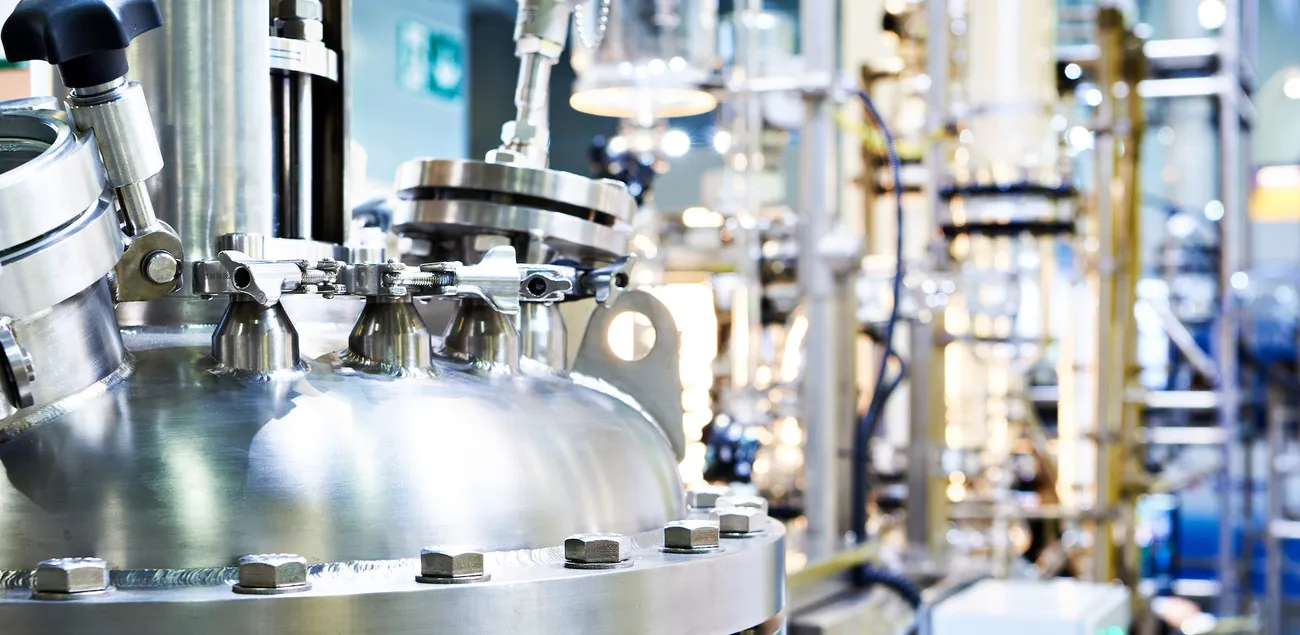
Shutterstock
Frequently Asked Questions (FAQ)
Why is titanium so important for aerospace and defence?
It delivers the highest specific strength of any structural metal while shrugging off heat and chloride corrosion, which translates into lighter, hotter and longer-lasting airframes and engines.
Which countries produce the most titanium sponge?
China accounts for about 60 percent, Japan 16 percent, Russia 13 percent, Kazakhstan four percent and the United States roughly two percent, based on 2024 data.
Who are the leading producers in 2025?
VSMPO-AVISMA, BaoTi, Toho Titanium, TIMET, ATI, Western Superconducting Technologies and UKTMP collectively control more than seventy percent of aerospace-grade output.
How much titanium hides inside a twin-aisle jet?
A Boeing 787 carries about 77 tonnes of the metal—roughly fifteen percent of its structural weight.
What is the projected supply deficit for 2025 and why does it matter?
CRU sees an 18 kt shortfall, which forces manufacturers to dip into already slim inventories and helps keep prices elevated.
Are there titanium ETFs?
Not yet. Most investors gain exposure through producer equities or diversified miners with a strong titanium revenue stream.
Does recycled titanium match virgin material?
Yes. Well-managed revert and powder recycling routinely hit aerospace Grade 23 specs, matching tensile strength and oxygen limits.
What could put a lid on prices over the next five years?
Faster composite substitution, a jump in scrap collection, cheap electro-de-oxidation sponge, or a macro-driven slowdown in aircraft orders could all act as brakes.

